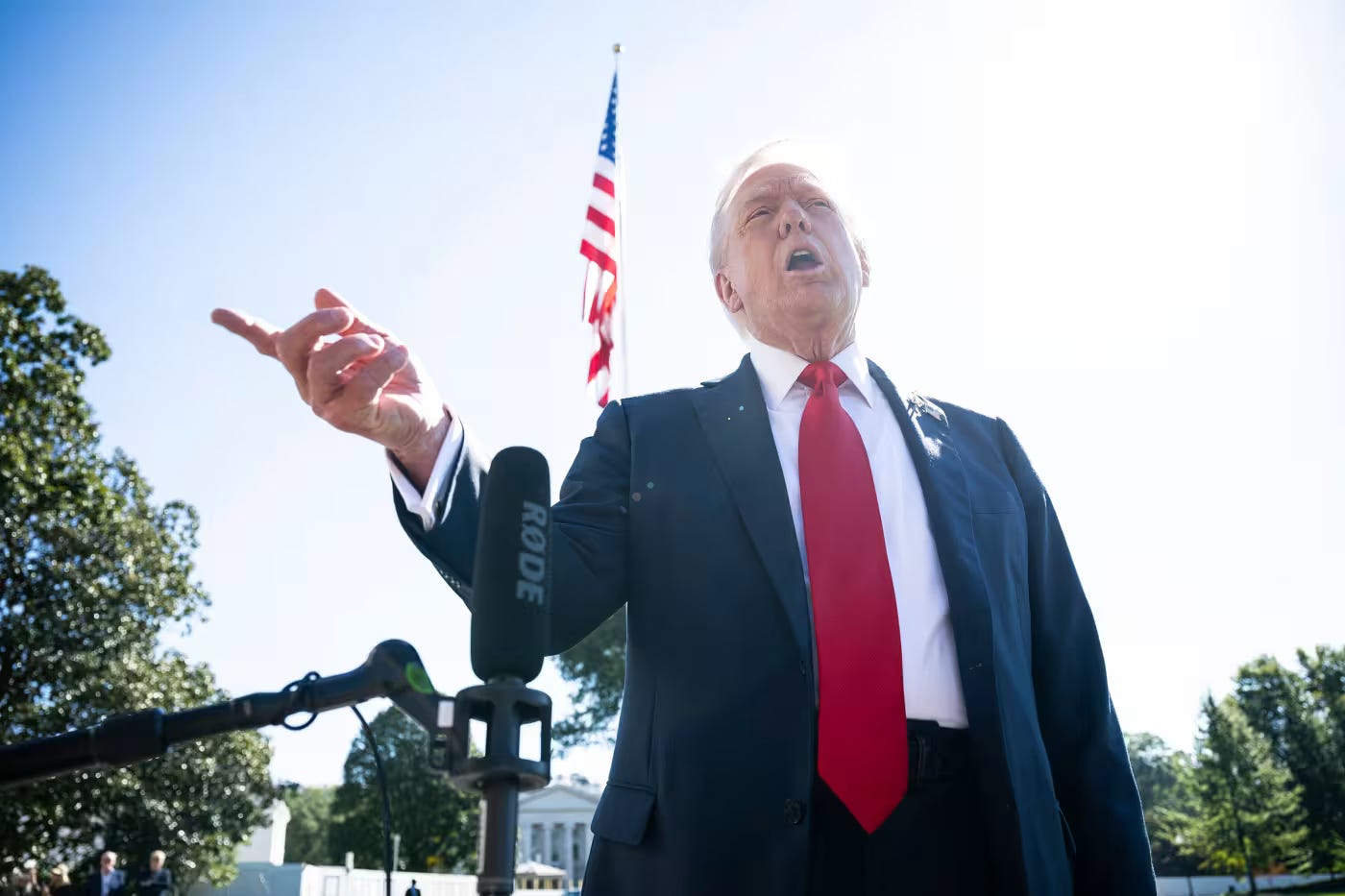The Tug-of-War at the Heart of the Government Showdown
A quick history of impoundments, rescissions, and the current funding stalemate
When President Donald Trump returned to office, so did one of his favorite budget tactics: killing spending that Congress already approved.
From targeted impoundments (delaying or refusing to spend allocated funds) to large-scale rescissions (formally canceling funds via Congress), Trump and his allies are pushing the boundaries of executive budgetary power. But this time, the strategy is not just political theater—it’s freezing the entire budget process.
One primary reason the federal government is shutdown? Many Democrats don’t trust that the deal they agree to now will actually be carried out. More specifically, they worry Trump will simply impound funds or later rescind them. Their logic: why agree to a deal if the other team plans to cross out certain line items post-signature?
It’s the latest escalation in a fiscal arms race that’s already warped normal governance with shutdown threats, continuing resolutions, and debt ceiling brinkmanship.
But impoundments and rescissions aren’t just procedural wrinkles. They’re a long-running—and constitutional—tug-of-war over who controls federal spending.

What Are Impoundments and Rescissions, Exactly?
Impoundment happens when a president refuses to spend money that Congress has already appropriated and the president has signed into law. It’s an executive delay—or denial—of action. Unless Congress has approved a delay, this is almost always illegal under the Impoundment Control Act of 1974.
Rescissions, by contrast, are formal requests by the president to cancel previously approved spending. Under the law, the president can propose rescissions, but Congress must approve them within 45 days. If they don’t? The funds must be released and spent as directed.
Impoundment is a unilateral delay. Rescission is a formal ask that Congress must agree to with a majority vote in both the House and Senate.
A Long History of Budget Power Struggles
Presidential impoundments a direct challenge to the Constitution’s separation of powers.
And they aren’t at all new.
Presidents have been trying to manage, withhold, or cancel spending since the earliest days of the republic:
1803: Thomas Jefferson delayed Navy gunboat construction to save money.
FDR and Truman: Used wartime impoundments to redirect federal resources.
Eisenhower: Quietly impounded highway funds during inflationary spikes.
For decades, these executive maneuvers were tolerated—sometimes even praised—when seen as technical, prudent, or good-faith management of taxpayer funds.
But all that changed under Richard Nixon.
Nixon, 1969–1974: Regularly impounded billions in spending—not just for technical reasons, but because he opposed the policies themselves. He withheld funding for environmental programs, housing grants, and more. His most brazen move? Refusing to spend funds for a water pollution program that Congress passed over his veto.
Congress responded with the Congressional Budget and Impoundment Control Act of 1974, which:
Created the modern budget process (including the Congressional Budget Office).
Explicitly limited unilateral impoundments.
Required all rescission requests to be approved by Congress within 45 days—or the funds must be released.
Trump’s First Term Tested the System
Despite the 1974 law, Trump’s administration crossed several red lines:
In 2019, the Trump White House impounded over $200 million in military aid to Ukraine. No rescission request was submitted. The Government Accountability Office later ruled this illegal, a key fact in Trump’s first impeachment.
Separately, Trump proposed multiple large-scale rescissions packages. In 2018, he requested $15 billion in cuts, mostly from unspent CHIP and disaster relief funds. Congress rejected them. But the strategy—target previously approved programs for clawback—became a template that he’d lean on when he was reelected.
Back Again—and Bigger
Now in his second term, Trump and GOP lawmakers are reviving the rescissions playbook. In recent months, the Republican-controlled House and Senate passed a $9.4 billion rescissions package—repealing funds for:
Climate investments from the Inflation Reduction Act
IRS enforcement
Public broadcasting
Pandemic-era infrastructure grants
It’s the first successful rescissions package of that size since Reagan was POTUS.
Why It Matters Now
This isn’t just about politics—it’s shaping today’s budget gridlock. Why would Democrats agree to fund clean energy, transit, or IRS modernization if they believe Trump will cancel those funds via impoundment or rescission next year?
The Constitution is clear:
“No money shall be drawn from the Treasury, but in Consequence of Appropriations made by Law.”
—Article I, Section 9
This isn’t advisory. It’s foundational. Congress controls the purse. Presidents don’t.
Trump didn’t invent impoundments or rescissions. But he has made them central to his governing strategy.
Unless Congress draws a bright, enforceable line, future presidents—Democrat or Republican—will keep erasing budgets they don’t like. Or as we see now, government funding deals will be even harder to broach because one party won’t trust the other to change the deal after it’s inked.
The power of the purse doesn’t belong to the White House. It belongs to the people—through their elected representatives in Congress.
And if Congress won’t defend it, it might as well surrender it.



Trump is vastly reshaping the powers of the Executive branch of government and it ain't good.